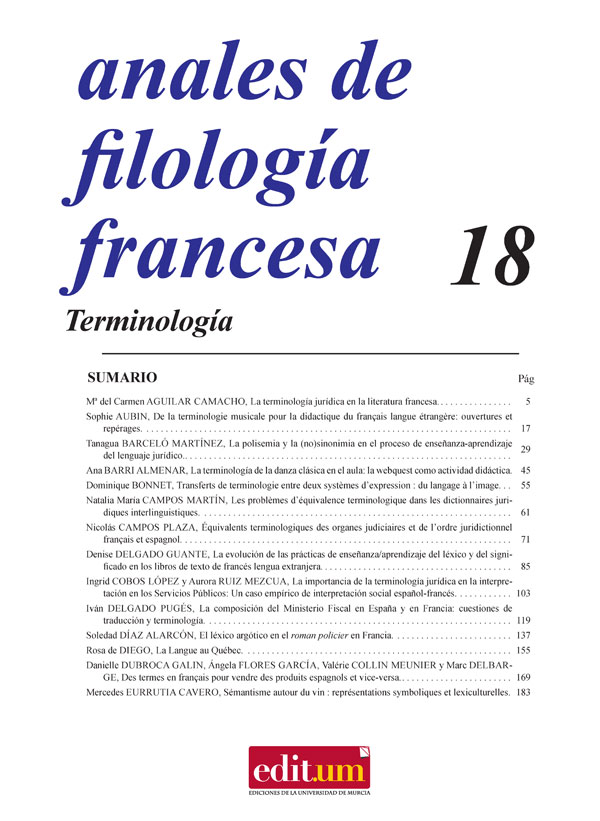Sémantisme autour du vin : représentations symboliques et lexiculturelles
Résumé
In this study the semantic values of the term wine will be analyzed. It has been a quite controversial term along history. Each historical period has conceptualized it in their own way, from the Middle Ages to the 21st century going through the Renaissance and the classics. The wine has its own language, understanding it in a broad sense as an expression and communication system; a language which has caused opposite representations in multi-disciplinar fields and it admits approaches from complementary angles (tasting-inspiration) and, sometimes, opposite (wine-drunkenness). Its implicit «added » value –not recorded from the lexicographic point of view –provides it with that «shared cultural load» evoked by Galisson. The semantic values of this term will be analyzed from three human behaviours which are delimited in contrast to the linguistic use: the drinker, the taster and the artist or creator. If the first one transforms the wine into something banal, the terminology becomes metaphor when the drinker becomes taster and reaches his/her sublimation in the sensations that the artist projects in the plasticity of his/her aesthetics.Téléchargements
-
Résumé242
-
PDF (Español (España))99
Las obras que se publican en esta revista están sujetas a los siguientes términos:
1. El Servicio de Publicaciones de la Universidad de Murcia (la editorial) conserva los derechos patrimoniales (copyright) de las obras publicadas, y favorece y permite la reutilización de las mismas bajo la licencia de uso indicada en el punto 2.
2. Las obras se publican en la edición electrónica de la revista bajo una licencia Creative Commons Reconocimiento-NoComercial-SinObraDerivada 3.0 España (texto legal). Se pueden copiar, usar, difundir, transmitir y exponer públicamente, siempre que: i) se cite la autoría y la fuente original de su publicación (revista, editorial y URL de la obra); ii) no se usen para fines comerciales; iii) se mencione la existencia y especificaciones de esta licencia de uso.
3. Condiciones de auto-archivo. Se permite y se anima a los autores a difundir electrónicamente las versiones pre-print (versión antes de ser evaluada) y/o post-print (versión evaluada y aceptada para su publicación) de sus obras antes de su publicación, ya que favorece su circulación y difusión más temprana y con ello un posible aumento en su citación y alcance entre la comunidad académica. Color RoMEO: verde.










